The heart of any Indian home is its kitchen. I still vividly remember the warmth and aroma wafting from my grandmother’s kitchen, a place where spices danced and flavours sang. But what always struck me was the impeccable organisation. Every spice jar and every utensil had its designated spot. It wasn’t just about aesthetics; it was about efficiency.
An organised kitchen, my grandmother made me realise, is a reflection of an attentive mind.
Organising – The Connection Between Mind and Space
Our state of mind is a reflection of the state of our living spaces.
A cluttered kitchen can lead to a cluttered mind, or be the reflection of one. Similarly, organising your kitchen can have therapeutic effects, bringing in clarity and calmness. After all, this is the sacred space where we pour in love for ourselves and our family, and prepare nourishment for all.
What are The Benefits of an Organized Kitchen?
- Efficiency and Time-Saving: Knowing exactly where everything is means we spend less time searching and more time cooking. This is especially crucial in our Indian cooking, where timing can be everything.
- Less Wastage: When we can see all our ingredients, we’re less likely to buy duplicates or let things go to waste.
- Safety: An uncluttered kitchen reduces the risk of accidents. No more tripping over misplaced items or spilling hot liquids!
- Mental Well-Being: A clutter-free kitchen leads to a clutter-free mind. Cooking becomes a joy, not a chore. I know it does for me.
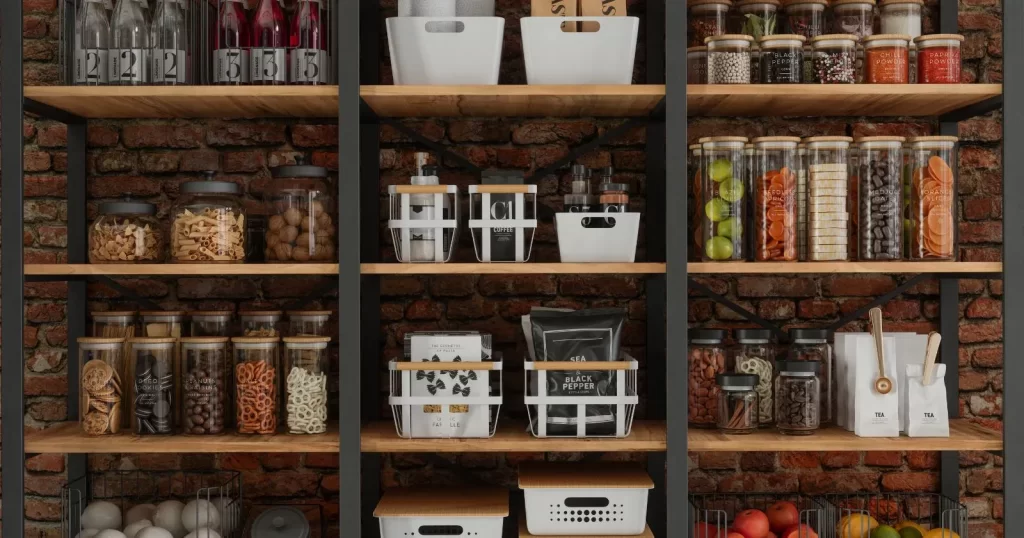
How Do I Organise My Kitchen Perfectly?
Achieving the perfect kitchen organisation might seem like a tall order, especially with the diverse ingredients and tools that Indian cooking demands. But with a little planning and some wise words from this author, it’s entirely achievable. Here’s how we can tackle them:
- Declutter First: We start by removing everything from our cabinets and drawers. This gives us a chance to take stock, discard expired items, and identify things we no longer need.
- Categorise Items: Group similar items together. This could be based on function, like all baking items together, or frequency of use such as daily use of spices and masalas vs. occasional ones.
- Prioritise Accessibility: Items used daily should be within easy reach. This might mean dedicating the prime real estate – the eye-level shelves – to our most-used ingredients and tools.
- Use Clear Storage: Transparent containers allow us to see what’s inside, making it easier to find what we need and know when we’re running low.
- Label Everything: Especially in our Indian kitchens, where we might have multiple types of grains, pulses, and spices, labels can be a lifesaver.
- Spice Organisation: Use clear, labelled containers for spices. Consider a masala dabba or anything that can double as a traditional Indian spice box, to keep everyday spices within arm’s reach.
- Utensil Storage: Indian cooking requires a variety of utensils. Use hooks to hang large spoons and ladles. Stackable racks can be a boon for pots and pans.
- Ingredient Storage: Store grains and pulses in clear, airtight containers. Not only does this keep them fresh, but it also lets you see when you’re running low.
- Optimise Vertical Space: Indian kitchens often have tall cabinets. Use shelf risers to take advantage of vertical space, ensuring items at the back aren’t forgotten.
- Cleaning Agent Storage: Store your dish soaps, liquids, scrub pads, steel scrubbers, and other items right under your sink. This way, the chemicals are away from your food.
- Appliance Storage: Our kitchens feature a number of electrical items, and organizing them can be an oh-so-tough task. Here’s a little help. While appliances like toasters, electric boilers, and sandwich makers can find their place on your fridge or small cabinets, the mixer on your kitchen platform for quick use, your food processor and juicer can stay inside your cabinet as you don’t require them daily.
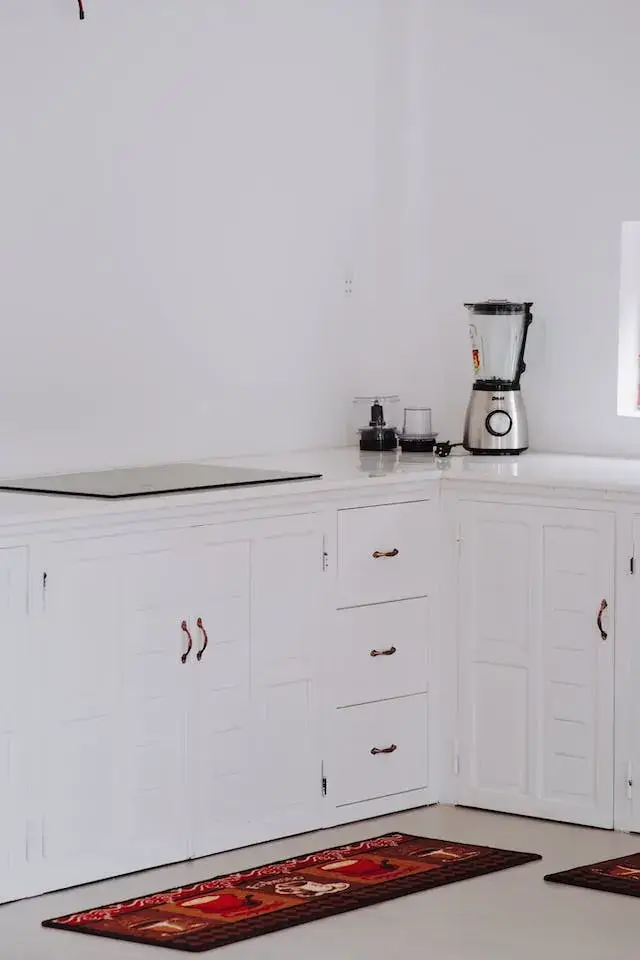
Some Must-Have Items for Kitchen Organisation
To maintain an organised kitchen, certain items are indispensable:
1. Masala Dabba
I can’t emphasise this enough, because it’s a staple in almost every Indian household. A spice box with enough compartments is essential to keep your daily spices handy and fresh.
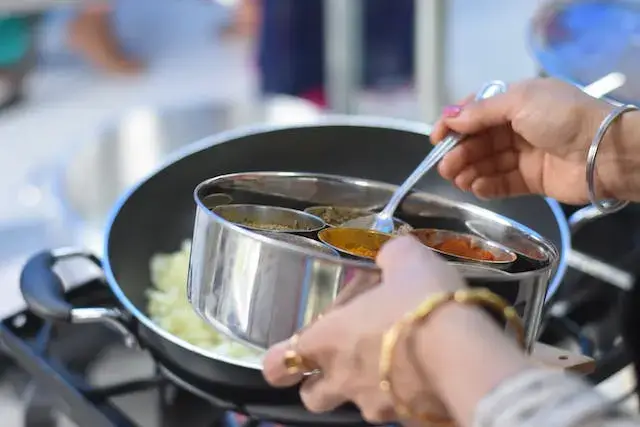
2. Rice and Flour Bins with Dispensers
Given that rice and various flours are staples in our cooking, having bins with dispensers makes it convenient to use and store.
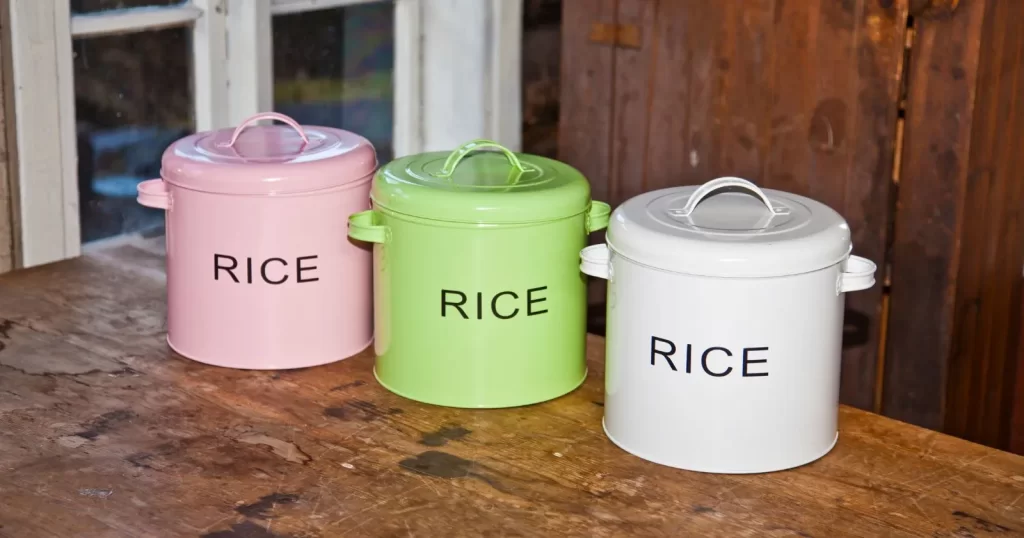
3. Roti Basket
A dedicated basket or container for storing fresh rotis and even dosas keeps them warm and prevents them from getting soggy.
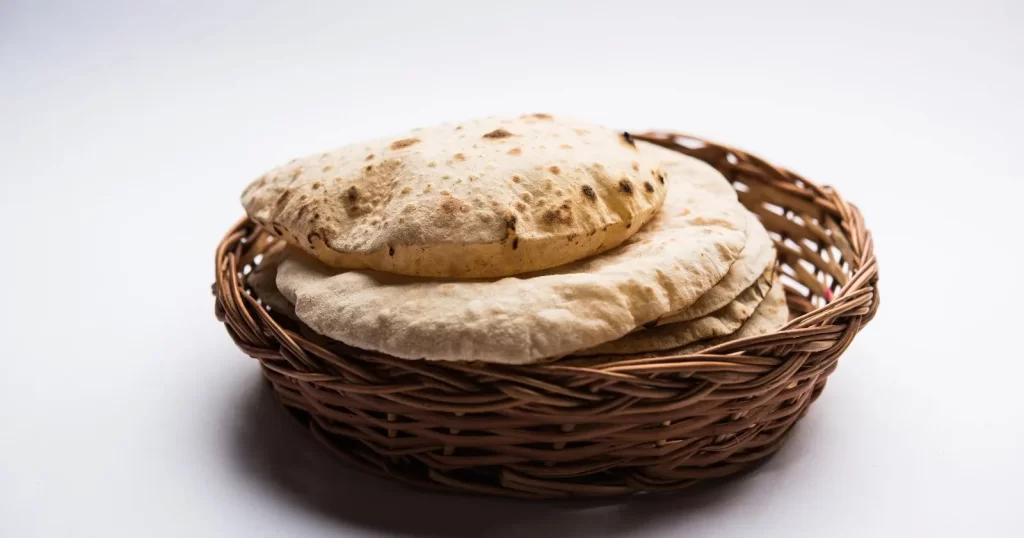
4. Stainless Steel Tiffins
Perfect for storing leftovers or for meal prep, these are durable and safe for food storage.
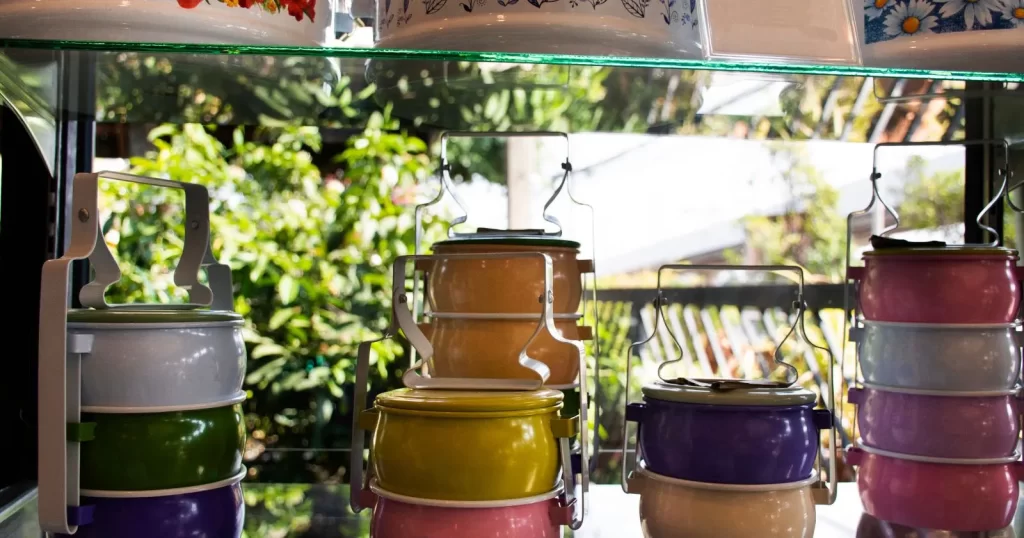
Kitchen Cabinet Organization Hacks
My grandmother often said – “A place for everything, and everything in its place.” Here are some hacks to make the most of your kitchen cabinets:
- Use Lazy Susans: These rotating trays are perfect for corners or for storing oils and sauces. A simple spin, and everything’s within reach!
- Drawer Dividers: These are a lifesaver for that chaotic utensils drawer. No more rummaging for that dal ladle!
- Door-Mounted Racks: These are great for storing cling film, aluminium foil, or even pot lids.
- Adjustable Shelves: If your cabinets have adjustable shelving, make the most of it. Adjust heights based on what you’re storing, ensuring no space is wasted.
- Pull-Out Drawers: Especially for lower cabinets, pull-out drawers make it easier to access pots and pans.
- Corner Storage Solutions: Corners can be tricky. Installing a LeMans corner unit or a magic corner pull-out can optimise this space.
- Overhead Pot Racks: These are perfect for storing pots and pans that are used frequently, keeping them within easy reach.
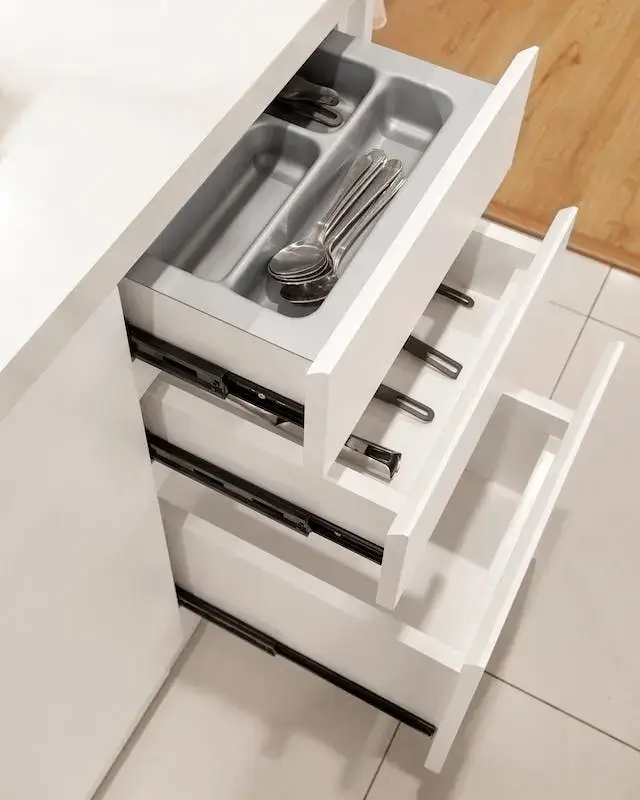
Super Easy Indian Kitchen Shelf Organisation Tips
Shelves can quickly become a chaotic mess if not organised correctly. Here’s how to keep them tidy:
- Use Shelf Liners: These not only make your shelves look neat but also make cleaning up spills easier.
- Implement Shelf Risers: These effectively double your shelf space, allowing you to store items on two levels.
- Baskets and Bins: Great for grouping similar items. For instance, all your non-refrigerated vegetables can go into one basket, making them easy to store, find and retrieve.
- Hooks Under Shelves: These are perfect for hanging mugs or utensils, utilising the often-wasted space under a shelf.
What are Eco-Friendly Products to Use in the Kitchen?
In our quest for a perfectly organised kitchen, it’s essential to be mindful of the environment. Here are some of my favourite eco-friendly products to consider:
- Glass Containers: Unlike plastic, glass doesn’t leach chemicals, is recyclable, and lasts longer. I’ve swapped nearly all my plastic for glass.
- Beeswax Wraps: A sustainable alternative to cling film, these can be washed and reused.
- Compostable Bin Liners: Instead of plastic bags, opt for compostable ones for your kitchen waste.
- Natural Cleaners: Ingredients like vinegar, baking soda, and lemon can be used to make eco-friendly cleaning solutions.
Desi DIYs for an organized kitchen:
We Indians love jugaads, don’t we? And then why spend on fancy storage items when you can DIY your own? So here are a few suggestions for you:
1. Cutlery Compartments
Things You Need: Empty Ferrero Rocher Boxe
Jugaad: We all joggle between those ill-assorted spoons and forks. Well, not anymore! Collect a Ferrero Rocher box or any flat box (with base and lid) and use it to make the compartments in your cutlery cabinet. Now, you can easily store spoons and forks in different ones.
2. Kitchen Napkin Boxes
Things You Need: Waste cardboard boxes, paper bags, and scissors
The Jugaad:
- Stop throwing the cardboard boxes in which you receive the parcel; rather, cut them on one side and use them to store your kitchen napkins and roti covers.
- If all your cardboard has already found its place in the dustbin, grab any small and stiff paper bag and cut its top, keeping the base, to make a container. Use it to stack your kitchen napkins.
- You can also decorate the box to match your kitchen’s theme.
3. Fruit Basket
Things You Need: Empty wooden crates, varnish, and cloth pieces.
The Jugaad:
- There’s something different about wooden décor; the aestheticism is at its peak! Thus, instead of discarding those Mango wooden crates, use them to store fruits and vegetables.
- Start by taking one and cleaning it with a wet cloth. Now paint it with varnish to protect and add shine to it. Put a piece of cloth or napkin on the base, and your fruit/vegetable basket is ready.
In Closing, The Joy of an Organised Indian Kitchen
Our kitchens are more than just places to cook; they are spaces where memories are made, stories are shared, and traditions are passed down. An organised kitchen is like a well-rehearsed orchestra, where every ingredient, tool, and pot plays its part to perfection.
In the rhythm of this organisation, we find not just efficiency but also joy. The next time you step into your kitchen, remember that with a little effort and the right strategies, you can create a space that’s both functional and heartwarming – a space where food and drink are prepared with a loving heart, caring hands and a clutter-free mind.


